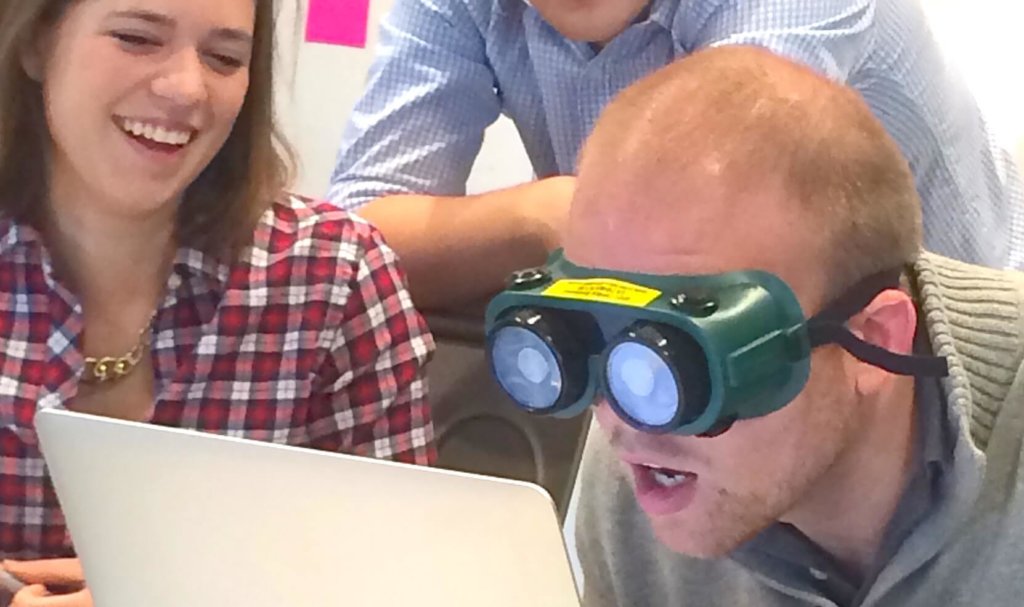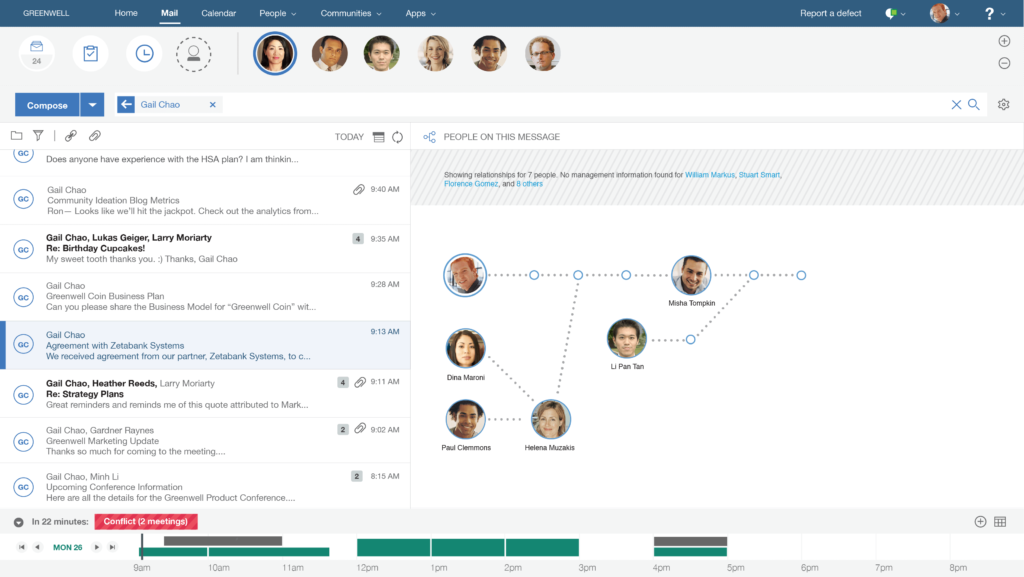 IBM Designers using low-vision goggles to better understand what users with vision impairments experience.
IBM Designers using low-vision goggles to better understand what users with vision impairments experience.On This Episode You’ll Discover:
IBM has taken a global leadership position in their approach to application design and development at scale. Using IBM Design Thinking practices, applications are made to deliverthe same experience users have grown accustomed to in mobile apps, while providing accessibility to persons with disabilities. IBM’s new product, IBM Verse, delivers a #NewWayToWork approach to email, collaboration and analytics because it simplifies email and collaboration with an elegant interface that “understands you,” resulting in a better user experience.
- Duncan says, “good design is a great experience for everybody” on any device.
“Good design is a great experience for everybody.” @duncanistan
 Tweet This
Tweet This
- Inclusive design is important for users with disabilities.
- M.E. says understanding the user is a first step in designing for accessibility; she also explains how their IBM Design team bakes accessibility into the design process and the IBM Design Language.
Understanding the user is a first step in designing for accessibility. @MEMillerID
 Tweet This
Tweet This
- What design thinking is and what makes IBM Design Thinking unique.
- How IBM Design Thinking utilizes three core elements: Hills, Sponsor Users and Playbacks.
- How IBM arrives at their outcomes through a cross-discipline team of people, practices, and places.
- Accessibility is integral to the foundation of IBM Design Thinking: the goal is to have one interface that functions for all users, and creates a better experience for all.
- What is involved in designing for accessibility; how this translated into designing for visual and physical disabilities in IBM Verse.
- Why IBM’s Design motto is: “Works the same. Works together. Works for me.”
- How IBM’s Design team consists of more than 1,000 designers distributed globally.
- How in the next 5 years millennials will make up 50% of the workforce.
- How IBM has created more than 25 IBM Design Studios worldwide, where IBM designers and even IBM clients can collaborate, innovate, and solve problems.
- How IBM is the largest company across the globe doing design thinking at scale.
- How IBM Verse brings email, social and analytics into a single collaborative environment.
- What the different features of IBM Verse are and how it leads to a better work experience and a “new way to work.”
IBM Verse combines social, email, collaboration and analytics into an elegant interface.
- How users enjoy the elegant interface and search capability of IBM Verse.
- That there is a freemium version of IBM Verse.
- How you can apply IBM Design Thinking practices in your business for a “new way to work.”
- How IBM holds a week-long boot camp for new hires to address accessibility and to understand how assistive technologies impact the UI experience.
- How goggles are used by designers to impede vision and simulate an experience of how a person with lowvision sees the screen.
- Why M.E. encourages applying IBM Design Thinking as an approach to solving a business problem.
Featured On This Episode:
- IBM Design on Twitter
- IBM Accessibility on Twitter
- IBM Design’s website
- IBM Accessibility’s website
- The Forrester case study: IBM Builds a Design-Driven Culture at Scale
- M.E. Miller’s personal website
- Write a review of this podcast in iTunes
- Bernie Borges on Twitter: @bernieborges
- YouTube channel
- Social Business Engine website
There are TWO WAYS you can listen to this podcast with Duncan Hopkins and M.E. Miller:
You can click the Listen Now button at the top of this page… Or, you can listen from your mobile device’s podcast player through iTunes or Stitcher.



